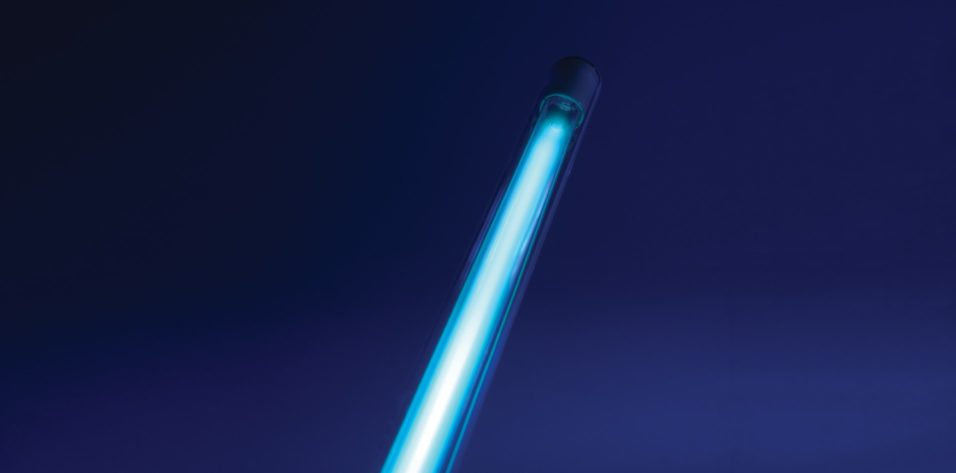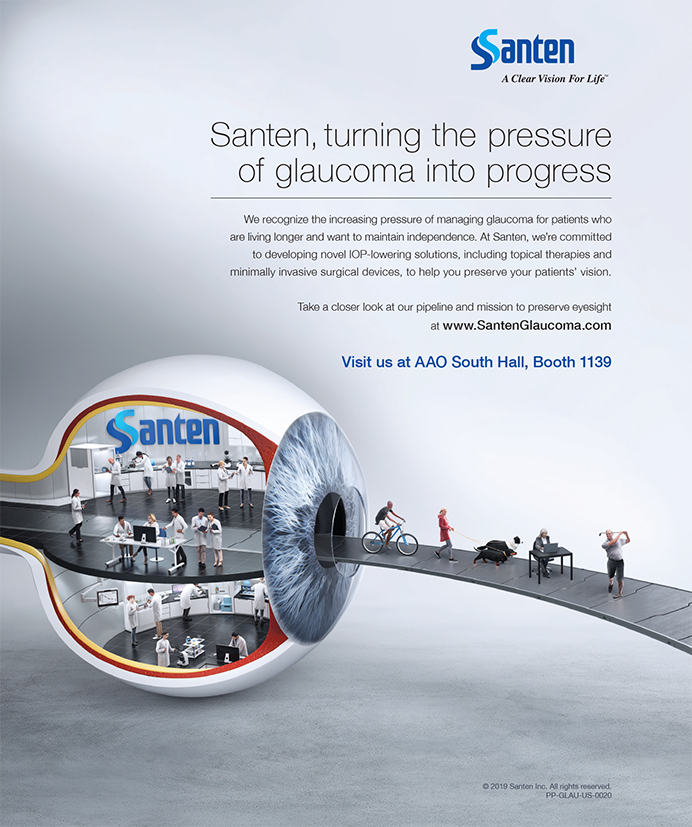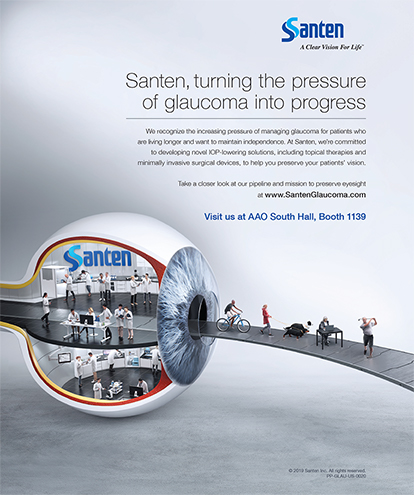Modern cataract surgery is essentially refractive surgery. The advent of new technologies has not only increased options for patients and surgeons, it has also elevated patient expectations. An innovation of particular interest is the Light Adjustable Lens (RxLAL, RxSight). This three-piece lens features a 6-mm-diameter biconvex optic composed of photoreactive UV light–absorbing silicone (Figure). The novel material permits postoperative adjustment of the IOL’s power with the Light Delivery Device (LDD; RxSight), thereby allowing surgeons to customize outcomes to meet each patient’s expectations and limit postoperative surprises.

Figure. The Light Adjustable Lens.
MECHANISM OF LIGHT ADJUSTMENT
The LDD uses narrow-band UV light to photopolymerize a targeted region of the RxLAL. UV light is applied centrally or peripherally to the curvature of the lens to correct myopia, hyperopia, and/or astigmatism. Current FDA labeling permits a range of adjustments from -2.00 D to +2.00 D of refractive error and 0.75 D to 2.00 D of cylinder.1,2
During the postoperative period, patients may undergo up to three adjustments based on their manifest refractions and visual needs. Adjustments are made 3 to 5 days apart. Once patients are satisfied with their refractive outcomes, a final lock-in treatment is performed 3 to 5 days after the final adjustment. This adjustment phase is unique in that it allows patients to play an integral role in determining how they want to function visually and achieving the desired outcome.3
PREOPERATIVE EVALUATION
The ideal candidate for the RxLAL is motivated to reduce his or her dependence on glasses, with either optimized distance or precision monovision. The patient is given a special pair of glasses to be worn at all waking hours after surgery, with one tinted lens and one clear lens. It is important to inform patients that they must wear these glasses to protect their eyes against UV light until 24 hours after their final lock-in to prevent premature photopolymerization of the RxLAL.
Because of the mechanism of UV light employed by the LDD, it is important during the preoperative examination to ascertain whether the patient is taking any systemic medications that carry a side effect of increased light sensitivity. In addition, it is important to ask about ocular history, as patients with a history of herpes simplex keratitis are poor candidates for the RxLAL because of the potential risk of disease reactivation.
As with other refractive procedures, it is essential to optimize the patient’s ocular surface before surgery in order to achieve a satisfactory outcome. An optimized ocular surface allows more accurate preoperative measurements, which help to achieve successful outcomes and patient satisfaction after surgery. In addition, an optimized ocular surface permits the uninterrupted delivery of UV light for adjustments. Pupil size after dilation must be at least 7 mm to ensure adequate exposure of the RxLAL during the light adjustments.
POSTOPERATIVE PERIOD
In the postoperative period, patients should follow a schedule of visits and medications in line with that for traditional cataract surgery. Conversations with patients should focus on the importance of constant UV light protection and the patient-centered refractive decision. In most instances, additional visits will be required, and these provide opportunities to discuss and trial different refractive outcomes with contact lenses to determine what will best accommodate the patient’s goals.
The initial adjustment can take place 2 to 4 weeks after IOL implantation; timing depends on the healing process. The postoperative adjustment period will be unique to each patient and determined by his or her visual needs and desires. Some patients may require only one adjustment, whereas others may require the maximum of three adjustments. Prior to lock-in, it is critical to confirm a stable, crisp refraction and stable postoperative patient examination.
Although patients may initially perceive the postoperative necessity of the UV light–blocking glasses and additional visits as inconveniences, it is important to highlight the short-term necessity to maximize life-long outcomes.
BE READY TO ANSWER QUESTIONS
The RxLAL represents a novel approach to cataract surgery and a new experience for patients and physicians alike. As primary eye care providers, optometrists have developed bonds of trust with their patients and are thus positioned to initiate discussion of the RxLAL and its novel technology. Optometrists are also well-positioned to assist in fine-tuning the postoperative refraction and visual target.
The RxLAL is a disruptive, exciting technology capable of providing an individualized, patient-centered refractive outcome. Because it is new, the comanagement structure for patient care will be a fluid process that will likely evolve over time to optimize the patient experience.
- FDA. Summary of safety and effectiveness data. Light Adjustable Lens (LAL)/Light Delivery Device (LDD). November 22, 2017. www.accessdata.fda.gov/cdrh_docs/pdf16/P160055B.pdf. Accessed August 8, 2019.
- Chayet A, Sandstedt CA, Chang SH, et al. Correction of residual hyperopia after cataract surgery using the light adjustable intraocular lens technology. Am J Ophthalmol. 2009;147(3):392-397.e1.
- Hengerer FH, Conrad-Hengerer I, Buchner SE, Dick HB. Evaluation of the Calhoun Vision UV Light Adjustable Lens implanted following cataract removal. J Refract Surg. 2010;26(10):716-721.







